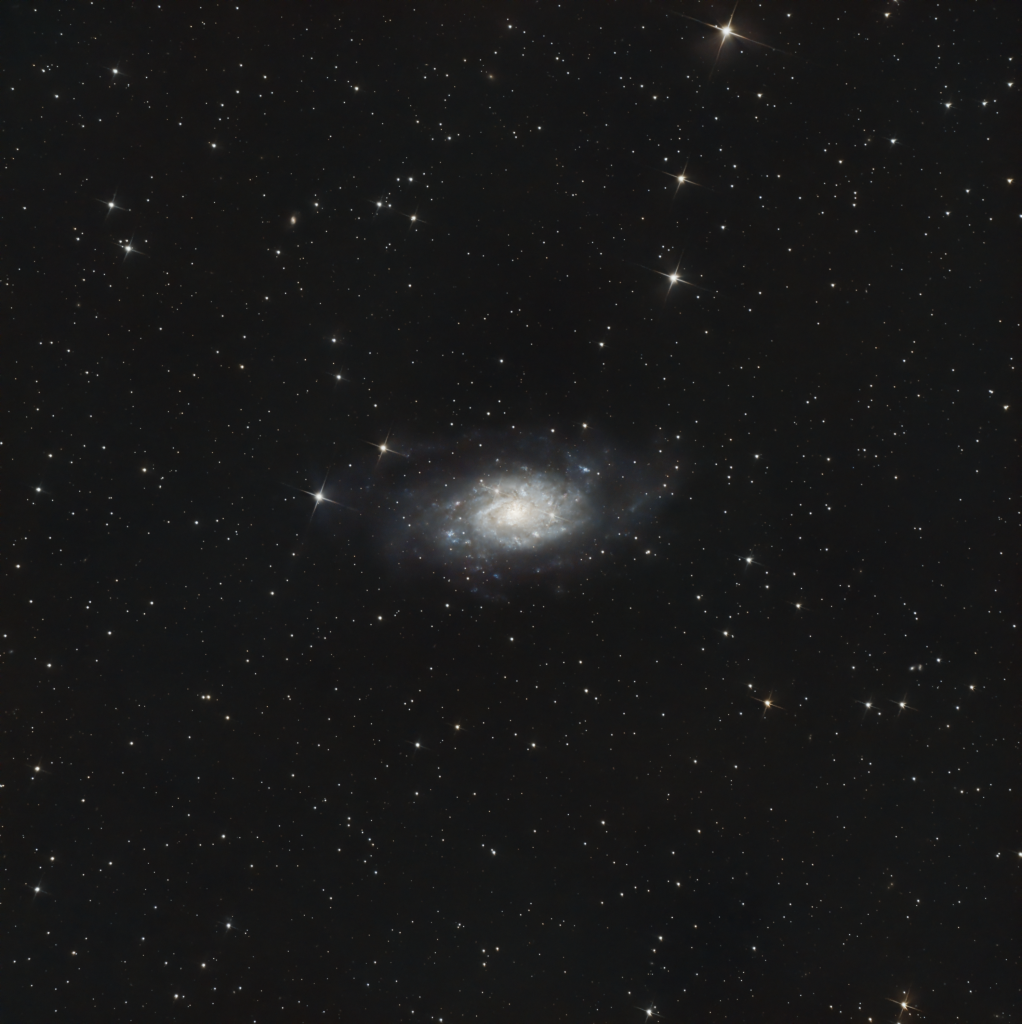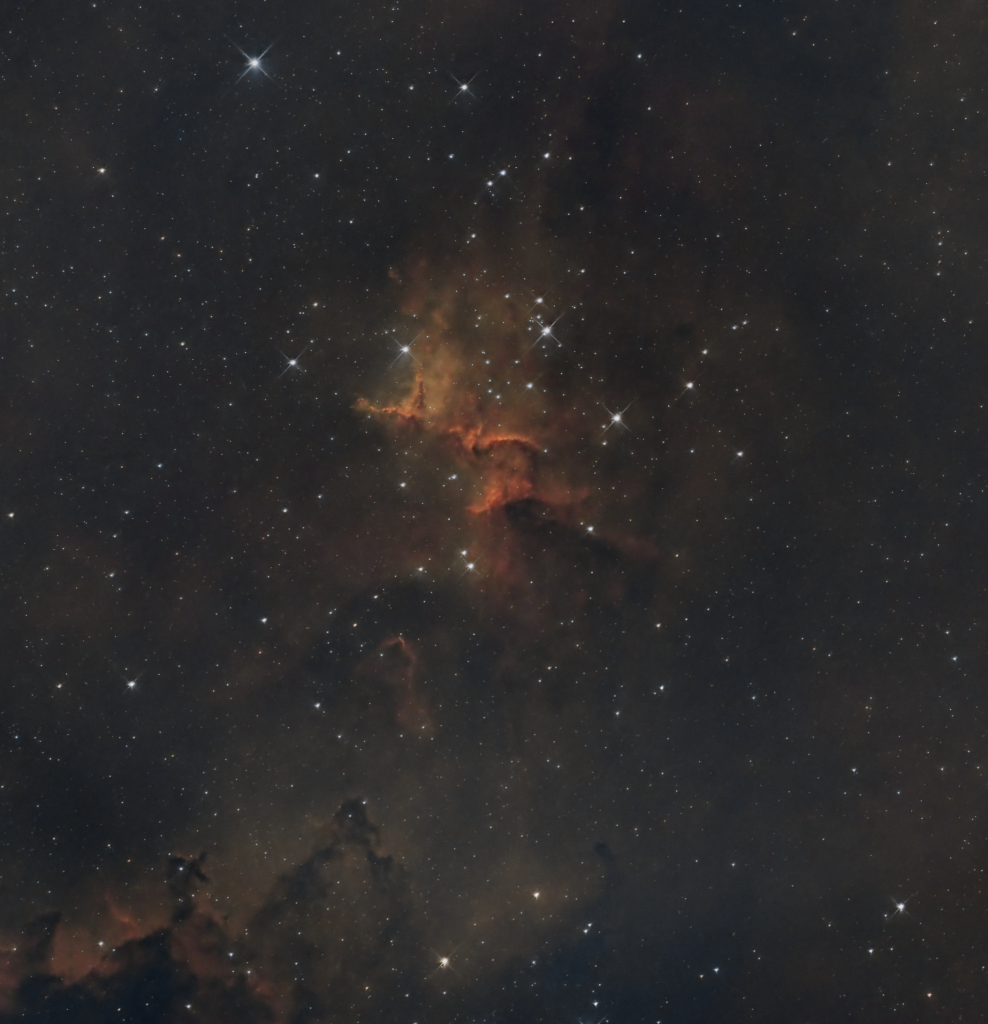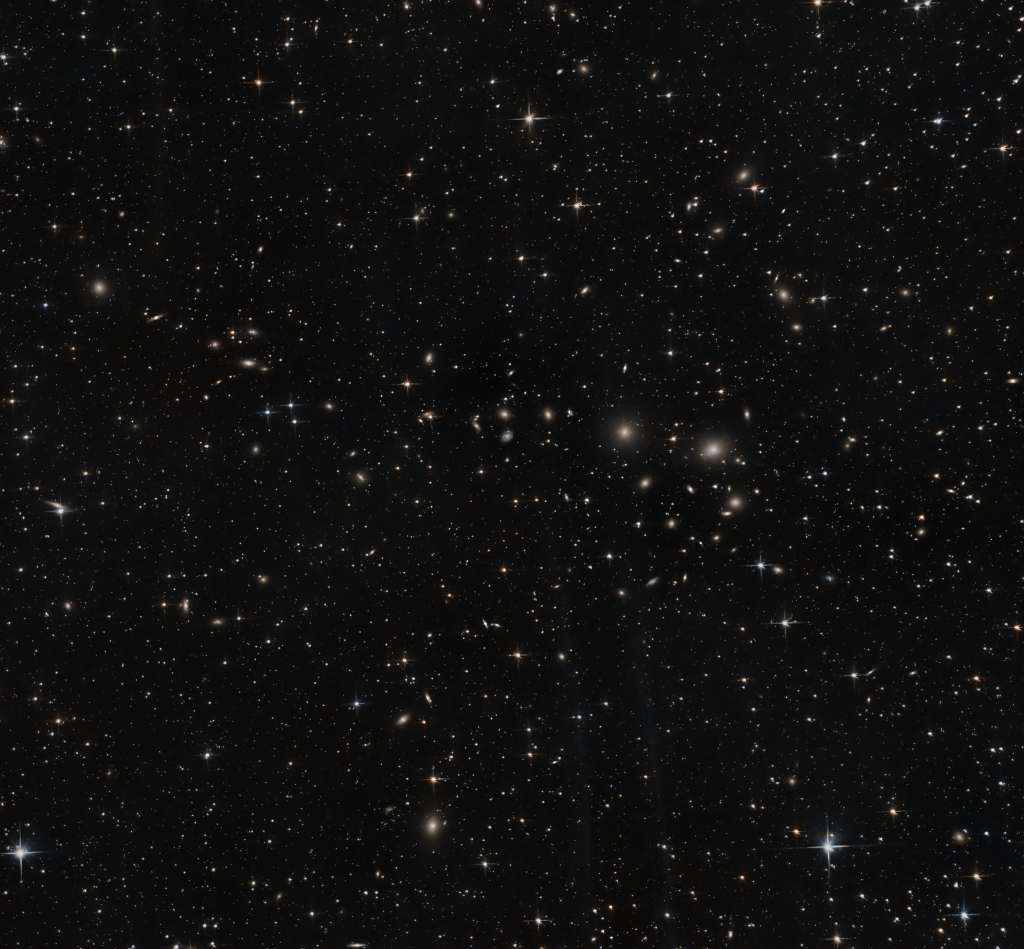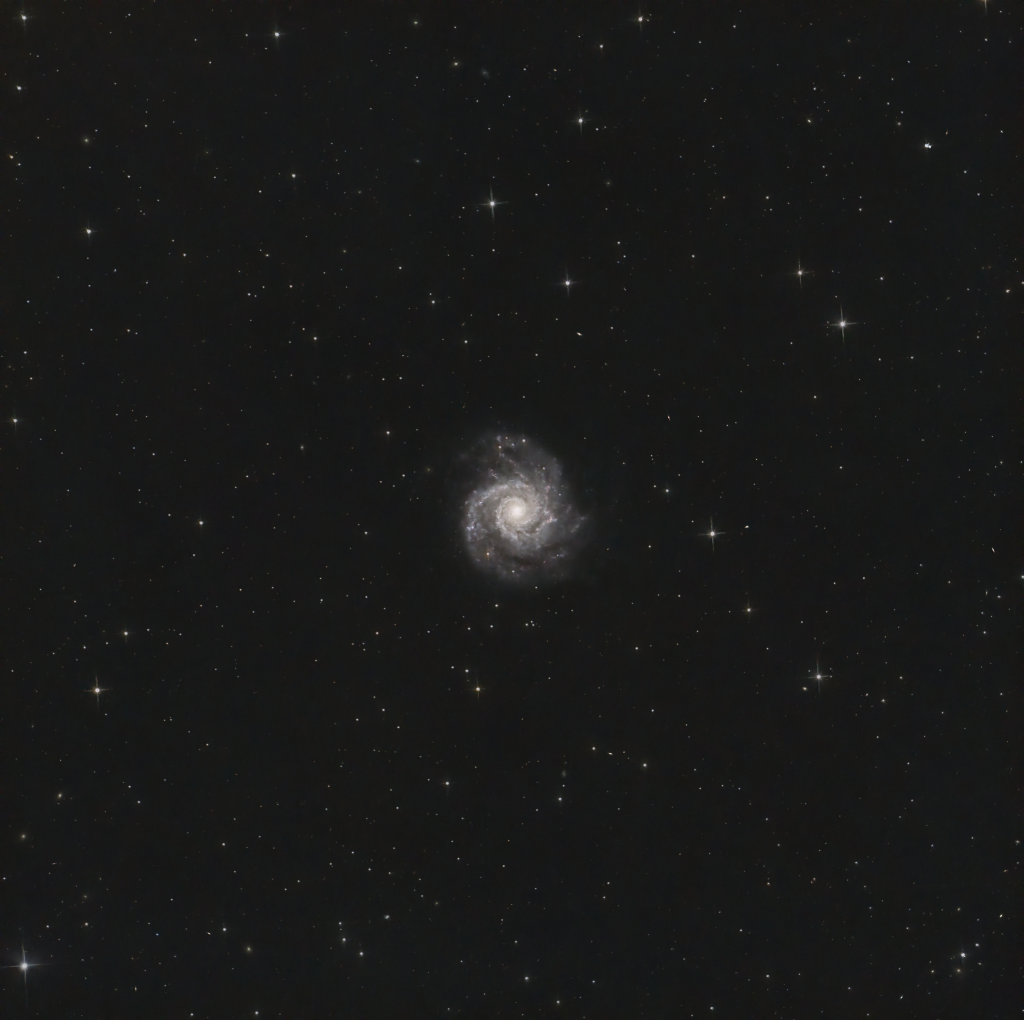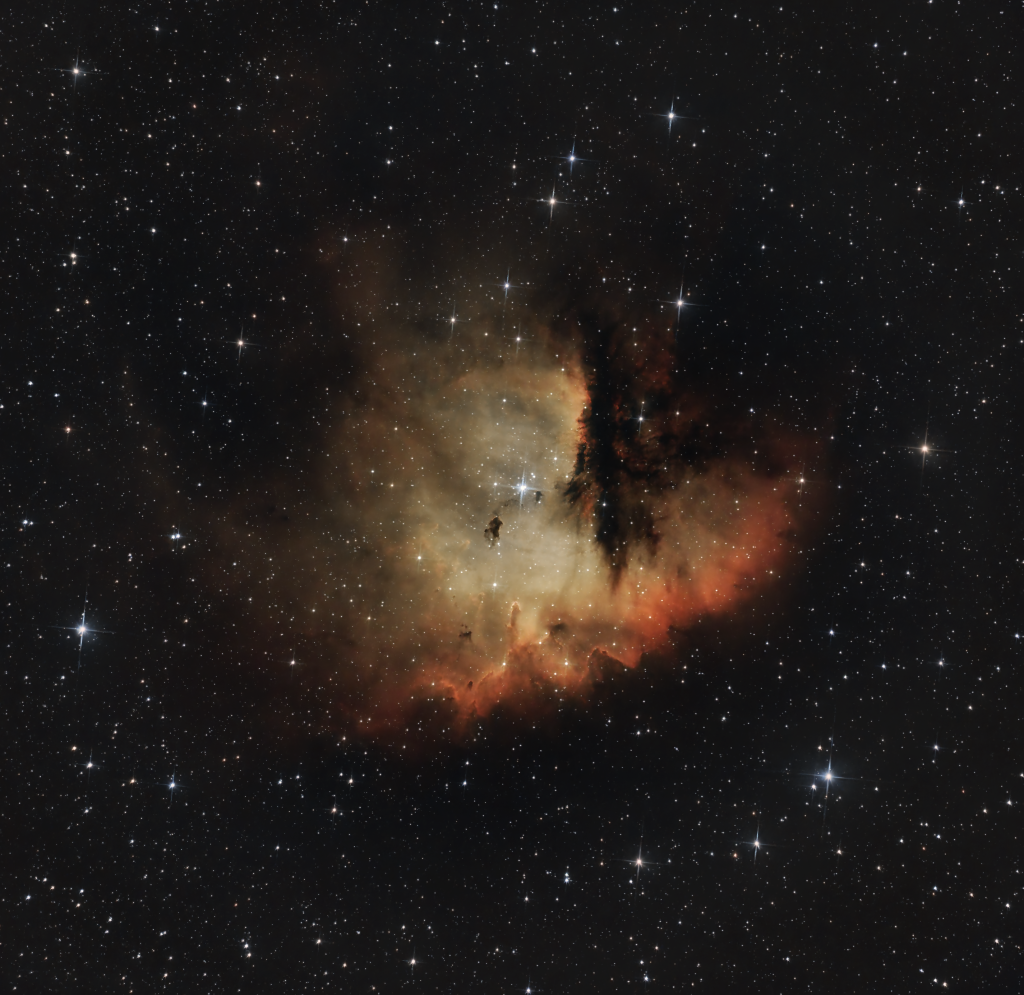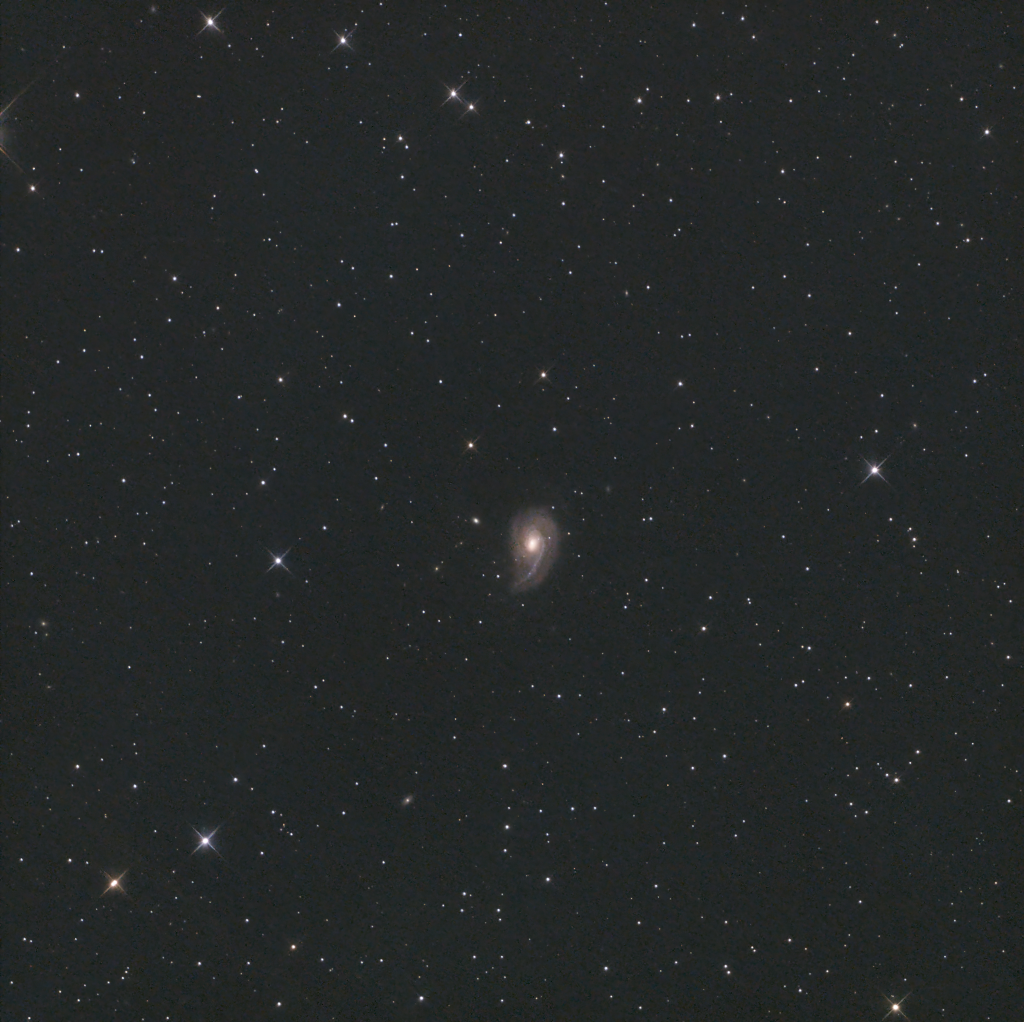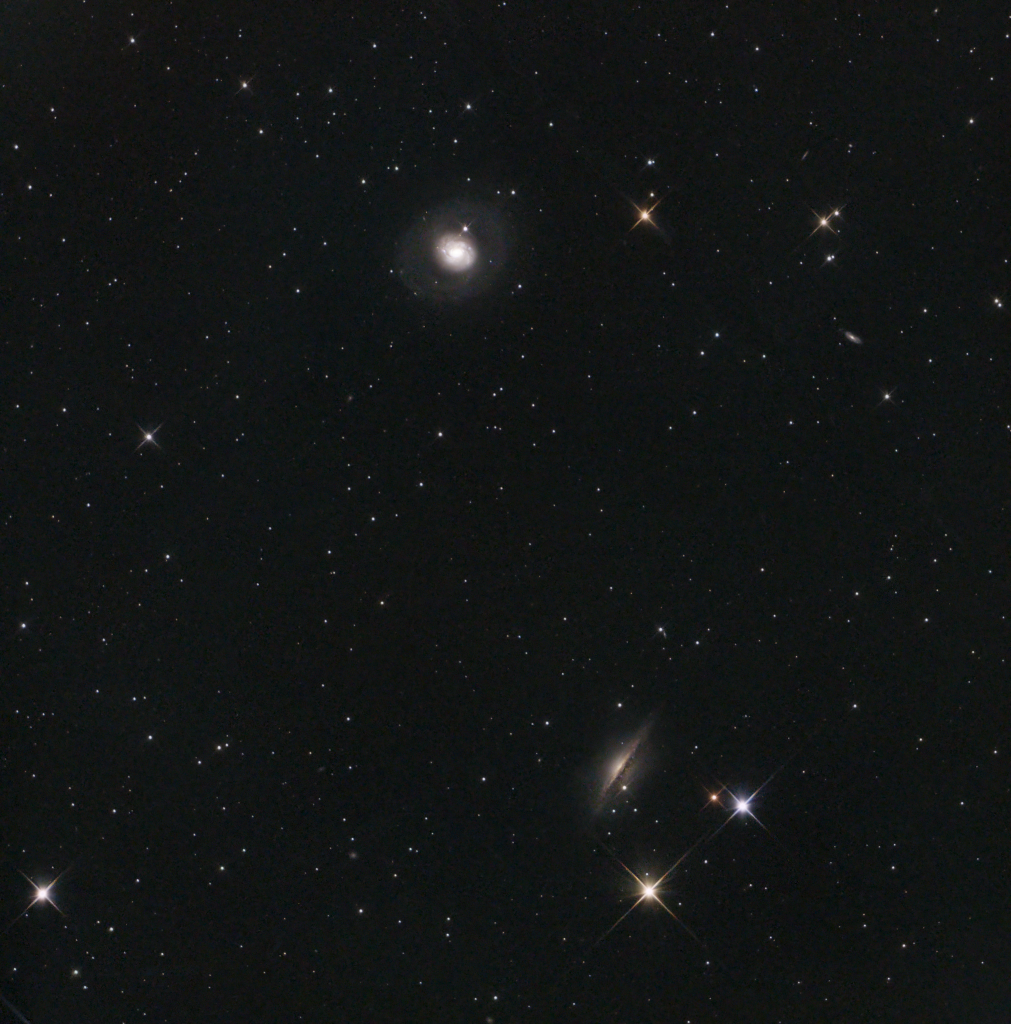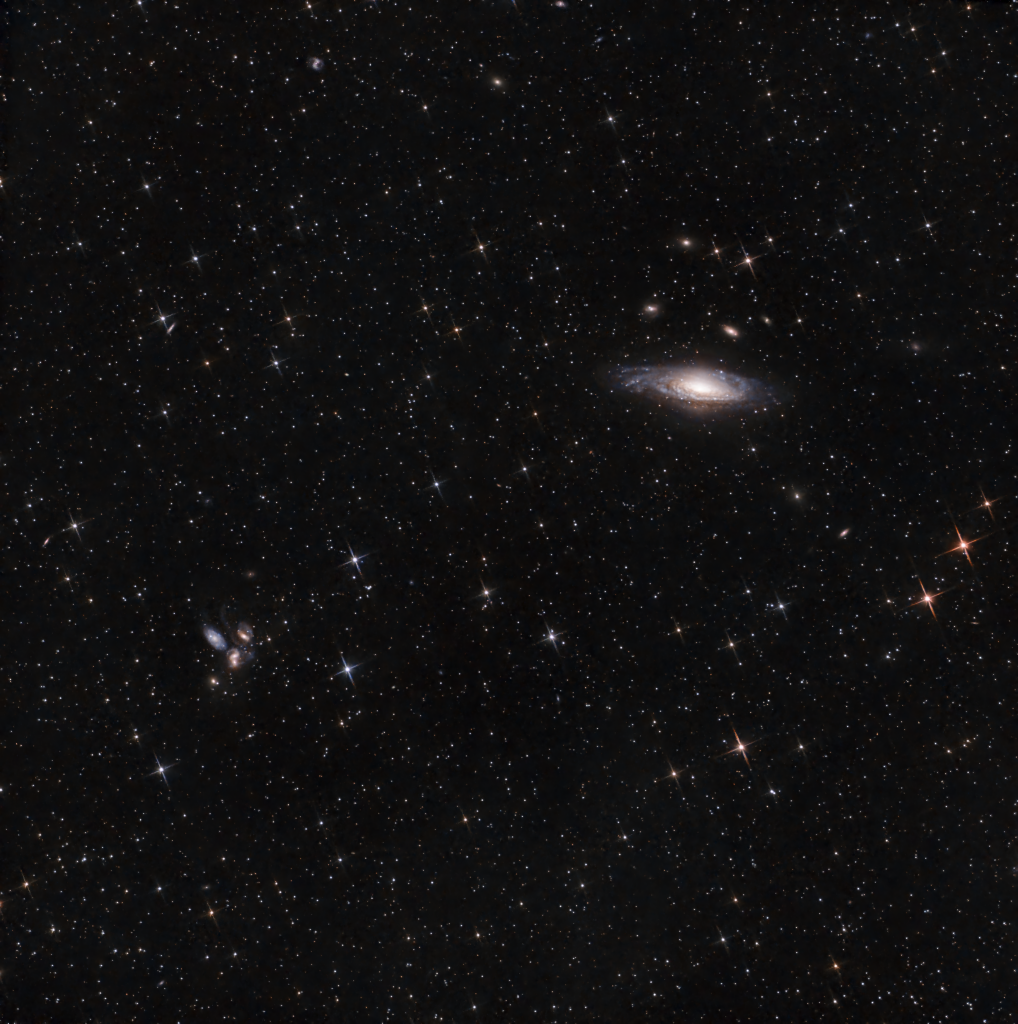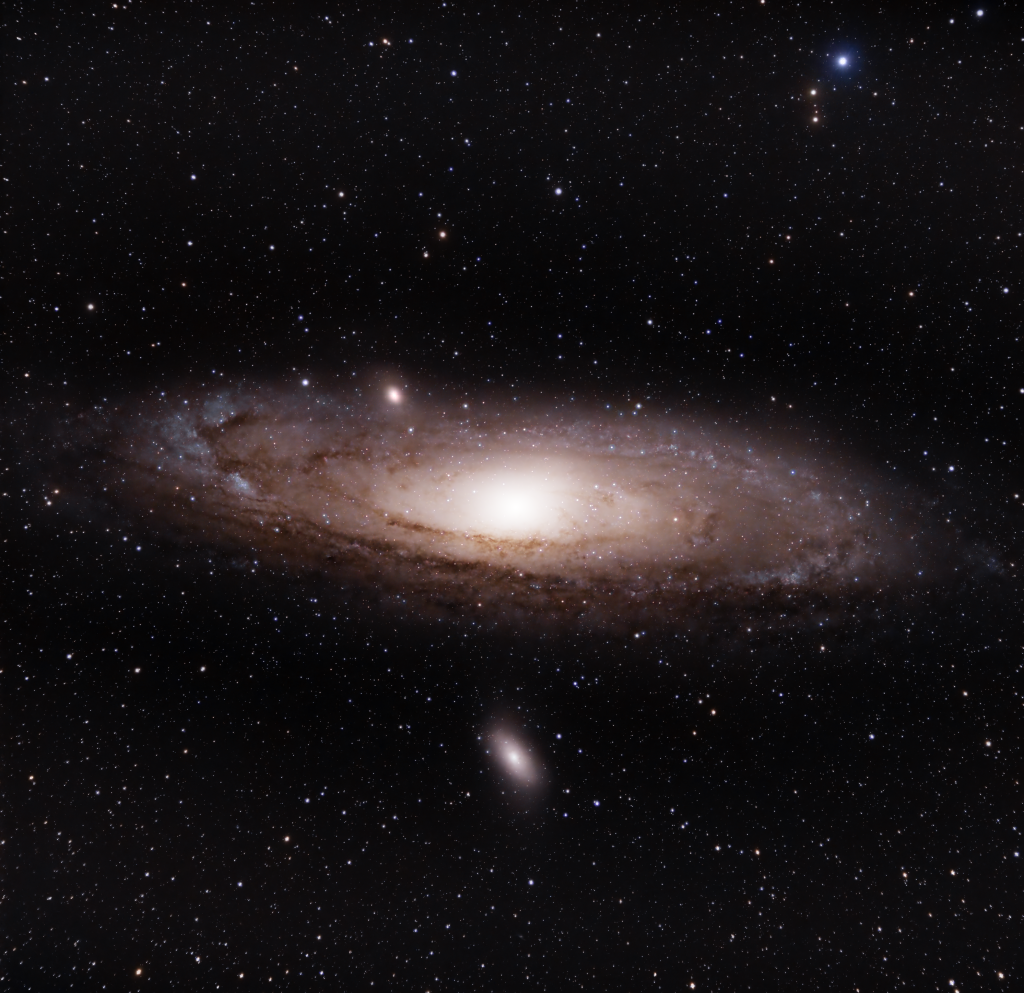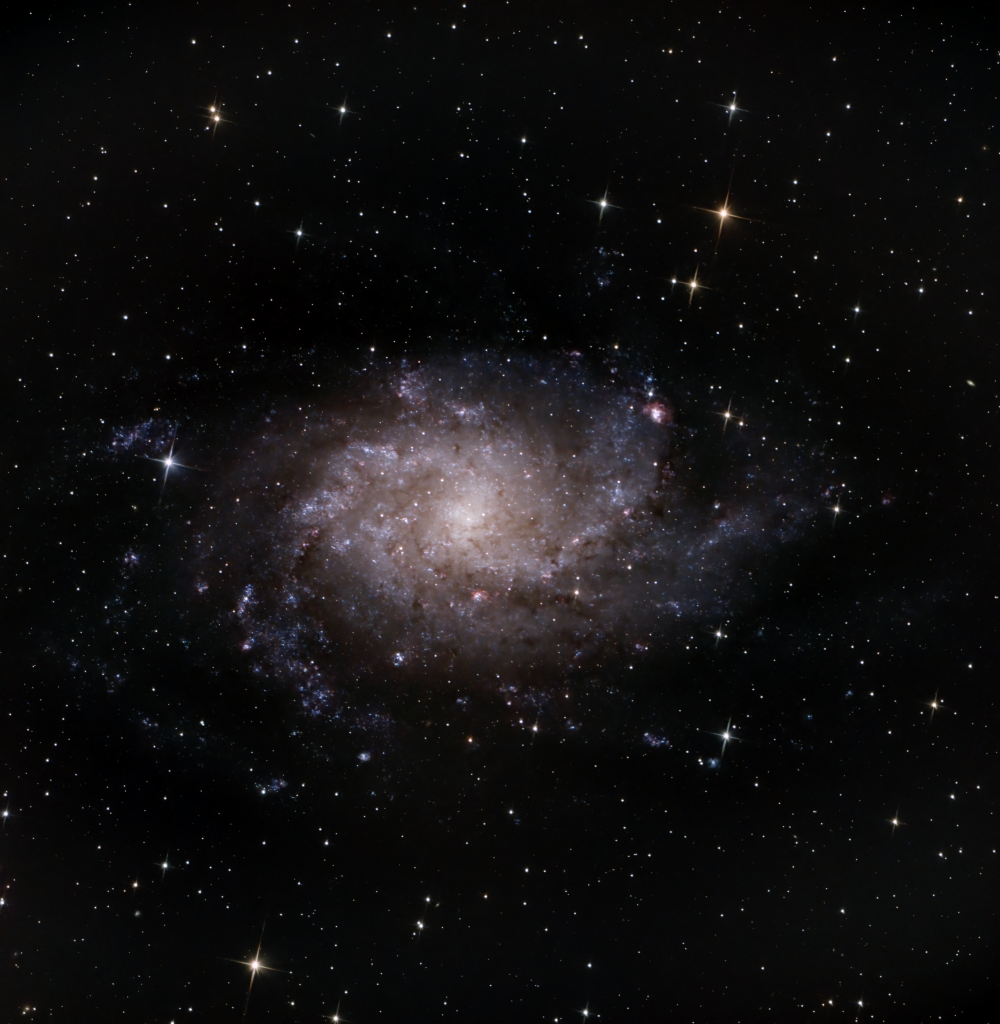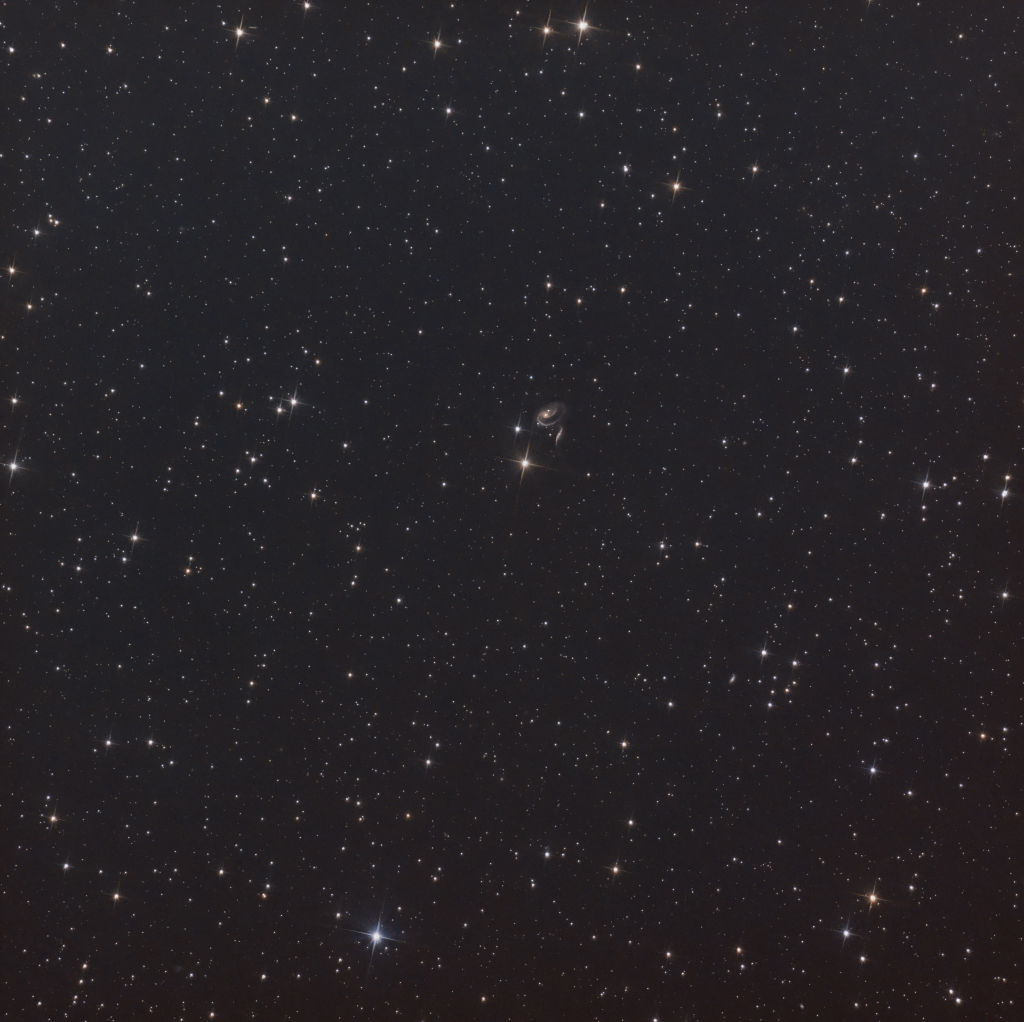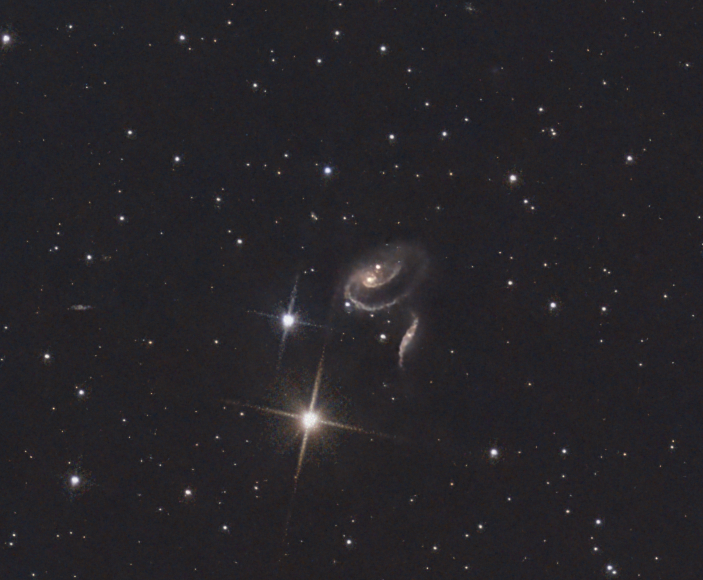Camelopardalis
Flashback to last year where I didn’t have a single clear night between the end of November and mid January. October has been like that, continuously cloudy and I’m worried about the rest of the fall season, considering this is one of the best periods for amateur astronomy.
Last night though we got some good conditions coming out of nowhere with clear skies from 11 PM till 4 AM.
I was not really sure what to do, I had just finished working on my mount trying to reduce backlash and I kind of hoped to test it during a night with full moon, not during perfect conditions. Additionally I had to work the next day so I couldn’t babysit the scope all night.
My first two subs were not good but luckily I discovered my balancing was off. After rebalancing I had around 20 excellent subs so I decided to go to sleep. This morning I found my scope covered in dew and frost but my asiair showed me around 115 subs so the plan worked. Unfortunately when checking the last 40 or so subs I found elongated stars. I’m not exactly sure what the root cause is, could be guiding but also balance or loss of polar alignment.
All things considered I’m very happy that I got some imaging time.
The object is NGC2403, a spiral galaxy in Camelopardalis, 8 million light-years away from us. Its structure and amount of star formation make it look at lot like M33 and if you would compare Hubble images it would be difficult to see the difference.
